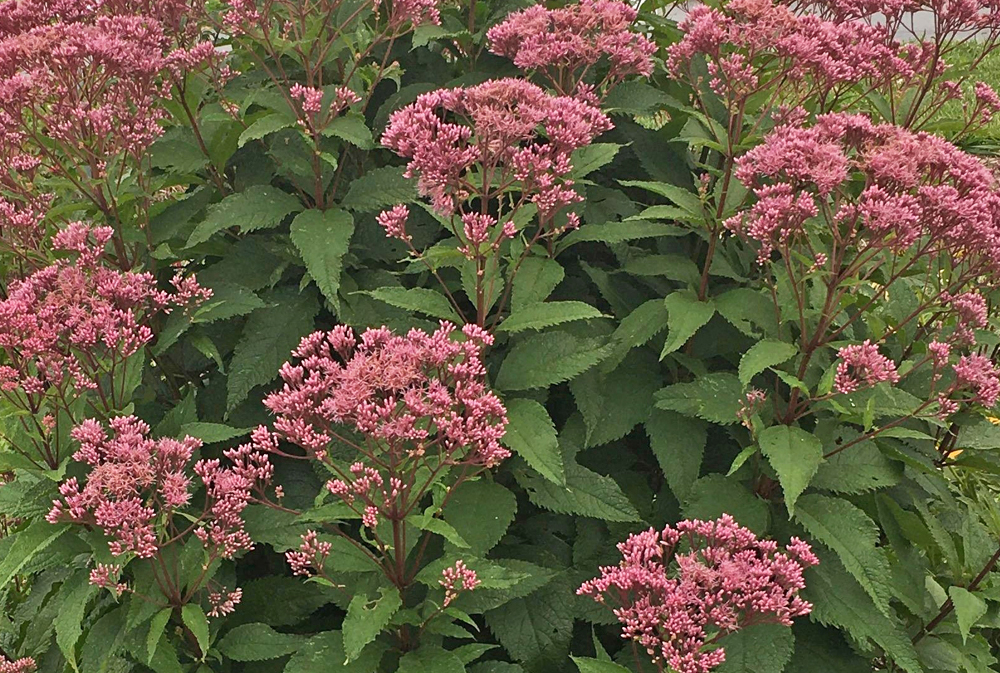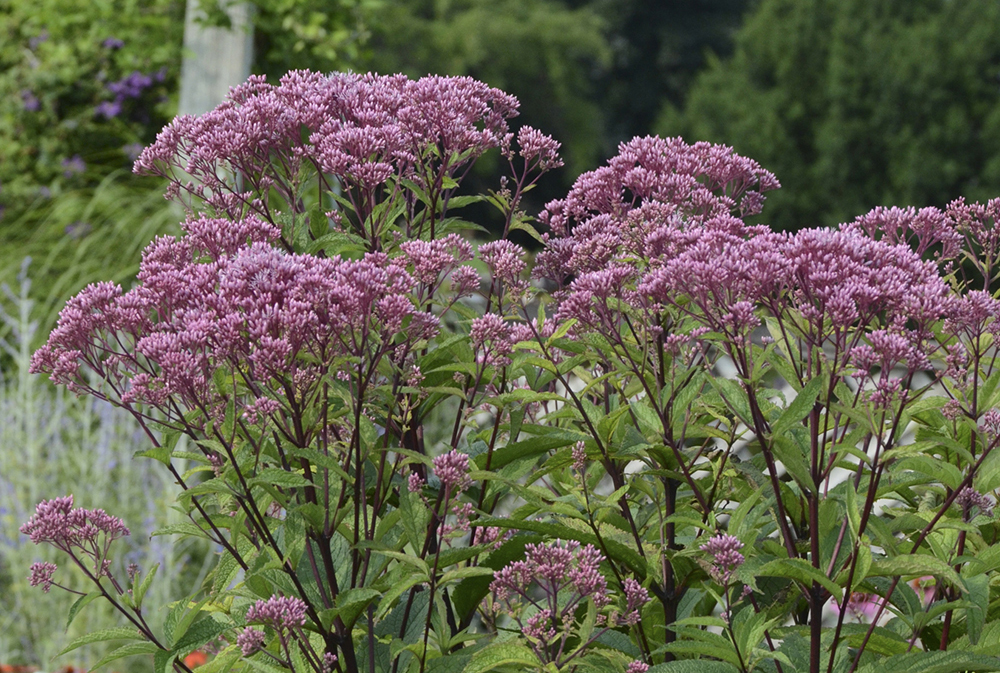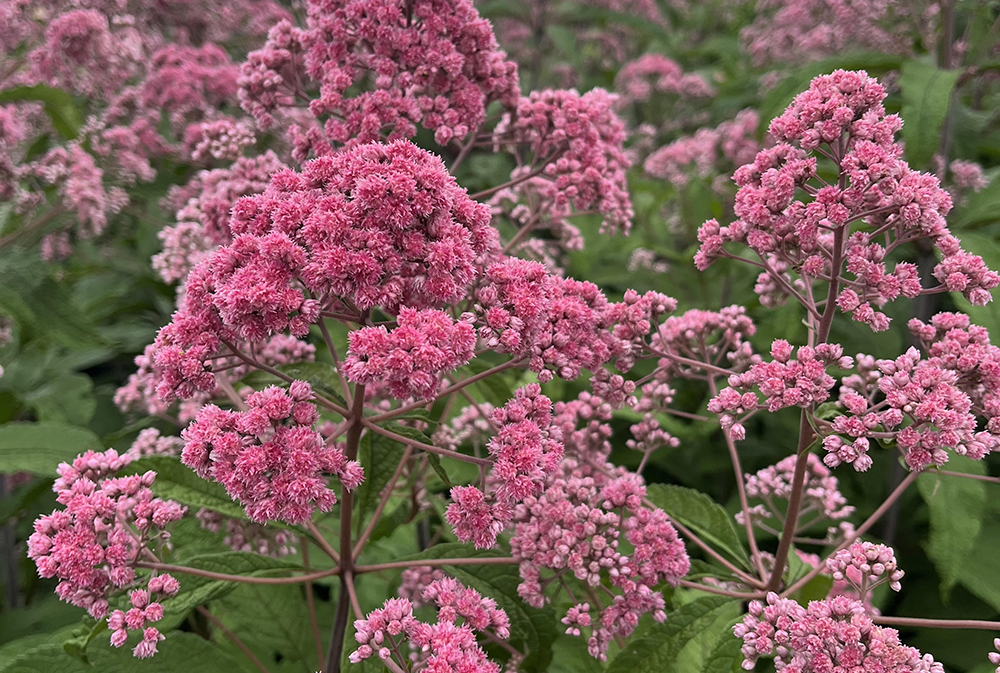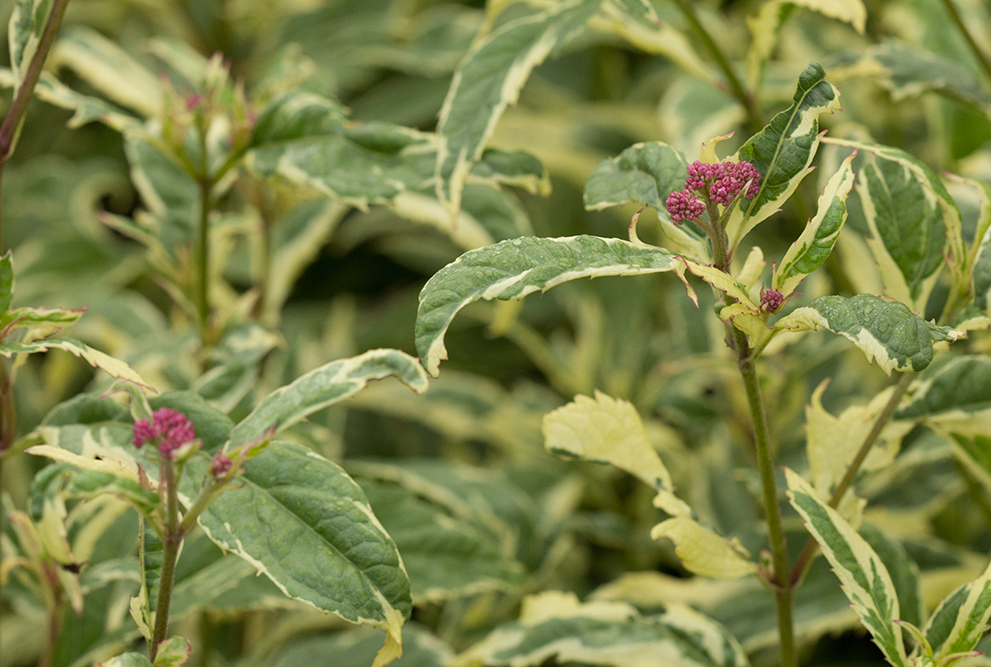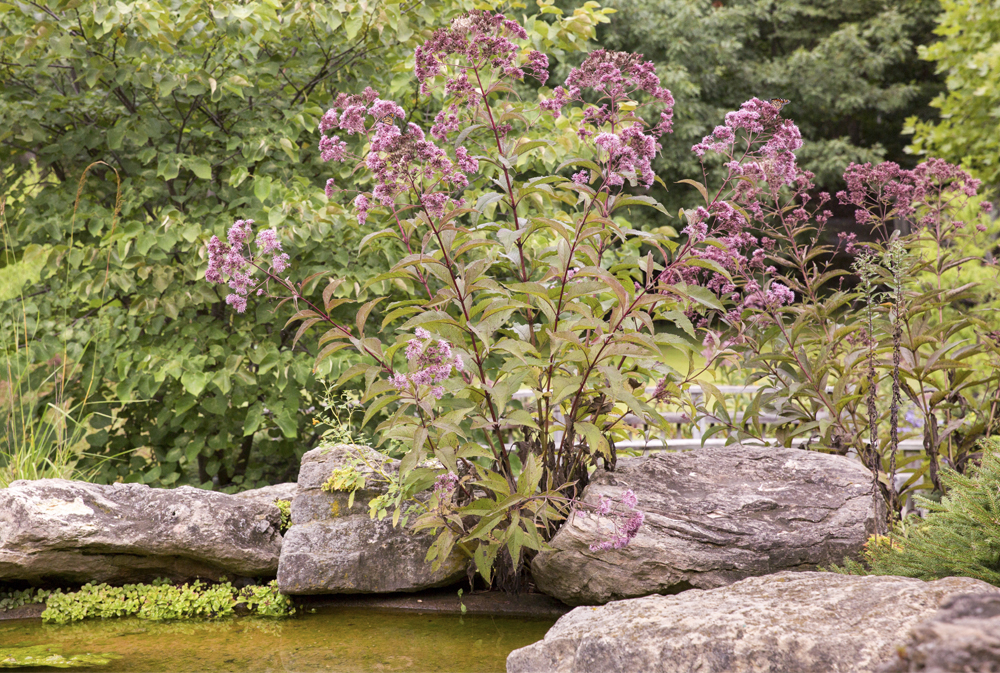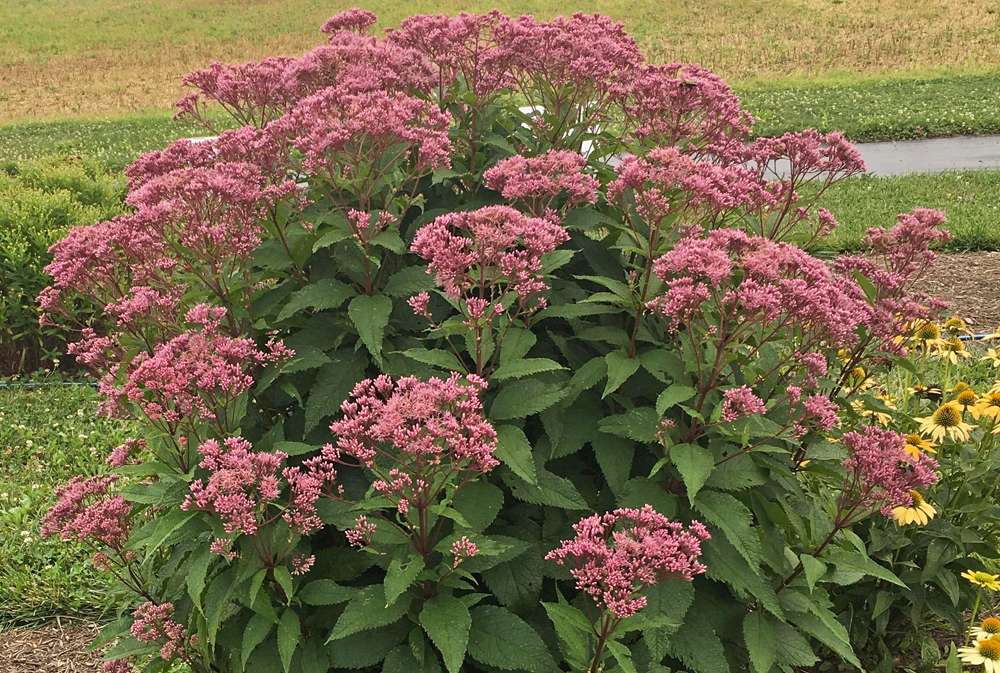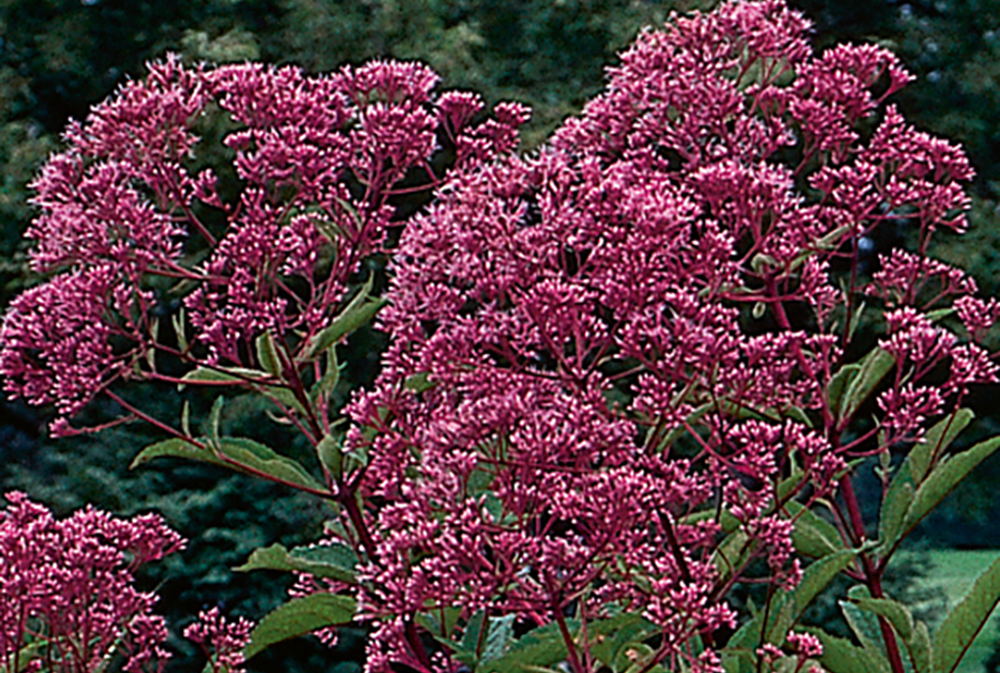Eupatorium
This shorter, more compact selection is much easier to handle in container production and on retail benches. It blooms heavily and freely with dome-shaped heads of mauve pink flowers on sturdy, dark purple-red stems. An important late season pollinator plant. Great for moist to wet areas.
Discovered at Kind Earth Growers as a chance seedling of the species; the first to bear double, sterile flowers. They contrast nicely with the deep maroon, hollow stems which provide nesting cavities for native bees. Pinching in production results in fuller pots loaded with bright pink blooms and a more compact habit. Nativar. Introduced by: Plants Nouveau.
Grown and sold mainly for its fantastic foliage all season, this selection features serrated, creamy yellow and dark green variegated leaves that form a bushy clump. Small clusters of deep pink flowers appear late in the season; interesting cut flower/stem. Best in slightly moist soils.
This stately wildflower adds architectural presence to long borders and meadow plantings. Native bees, butterflies and moths flock to its large, open clusters of vanilla scented, mauve pink flowers which appear above the rugged, green foliage on tall stems. Give it plenty of space and consistent moisture for best results.
Shorter and more compact than most, this selection forms a dense, tidy clump of rugose green foliage topped with mauve pink flowers. It blooms a bit earlier than the species and continues into fall, benefiting pollinators for months. A good native alternative for the middle of the border. Introduced by: Darwin Perennials.
Differing from the species by its shorter, more compact habit and denser inflorescenses, this perennial makes an excellent backdrop in perennial borders and wild sites where it may naturalize. Huge domes of mauve pink flowers held on wine red stems attract pollinators in droves. Introduced by: North Creek Nurseries

